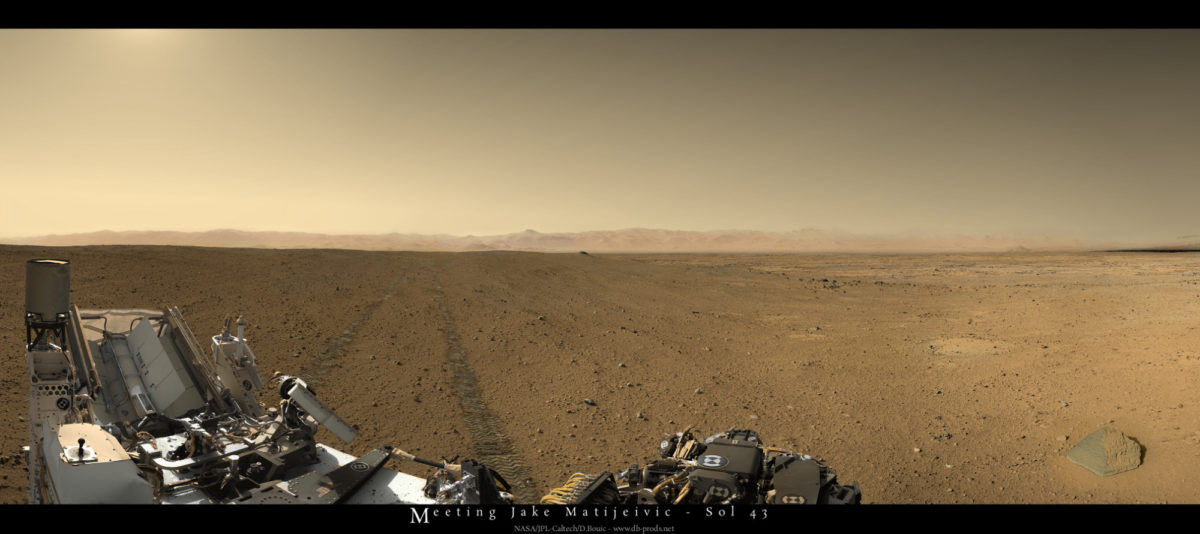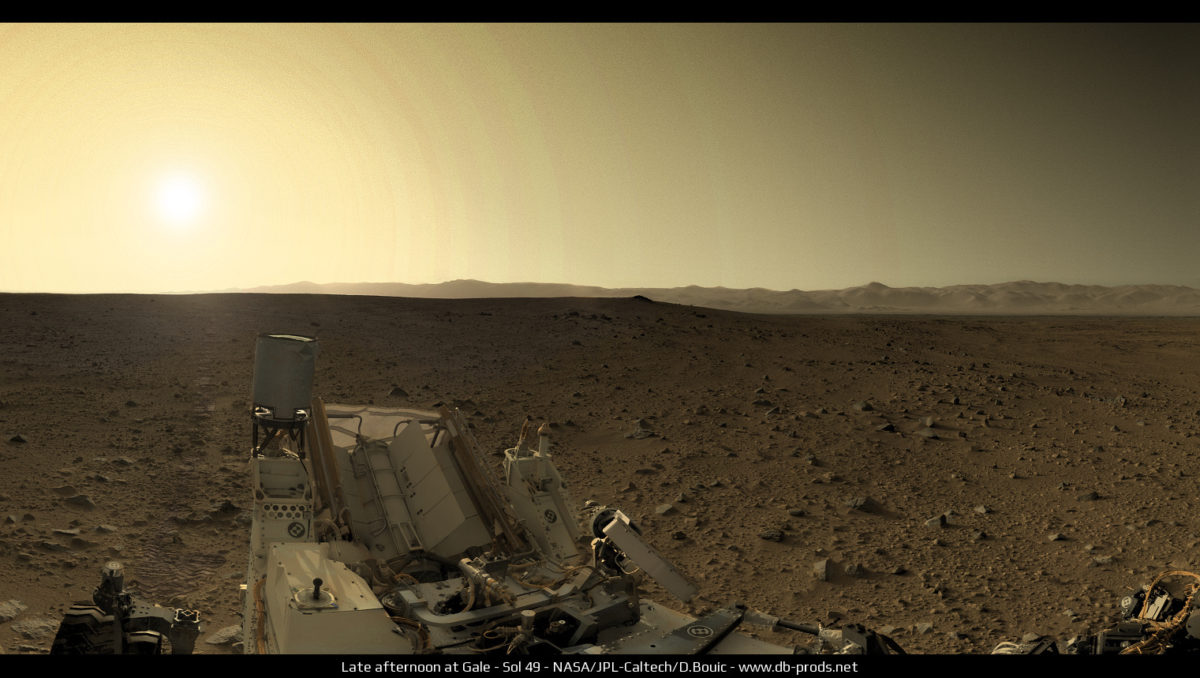Damia Bouic • Feb 15, 2013
An evening that brought me very close to Curiosity
Editor's note: Damien posted about his invitation to visit CNES at unmannedspaceflight.com and I wanted to share the news with people of this well-deserved recognition of the work of a real image processing artist. I asked Damien to tell the story here. --ESL
It is Sunday, the 27th of January. I get an email. I open it. It is Sylvestre Maurice, the Deputy Principal Investigator for Curiosity's ChemCam instrument, the instrument which has been built partly by a French team at IRAP (Univ. Toulouse, CNRS) and CNES. CNES also contains FIMOC -- the French Instrument Mars Operations Centre. I just can't believe my eyes. He offers to me to call him, and discuss my image processing work; their team, he says, simply loves it. And also he proposes me to visit their installations at CNES and IRAP. And he wants to talk to me!

So, we organized the trip very quickly, and Wednesday the 30th, I take the train, direction: Toulouse! After depositing my baggage at the hostel, I take the metro to the Technopole, where CNES is located. I meet the Communications agent of the ChemCam team, and she conducts me to the IRAP. It takes a little time to get the badges (and trust me, this is a super-secure area; I get the impression that I am going inside some secret agency).
And I'm in. There are lots of posters on the walls, all spacecraft-related, with satellite imagery (LANDSAT, SPOT, etc.), and Martian views. I feel like I am home. Really. And we are going inside the operations room. It's just like an ant city, with people chatting everywhere, going everywhere. They are most of the time on audioconference with JPL.

Sylvestre shows me the control center room, behind large windows, with people doing stuff on computers. There is a live map of Mars (from Mars24) showing the current position of the terminator, the night and day side, and the Gale landing site. I am seeing the Sun rising above the great crater. What a great show it would be from Curiosity's place! Maurice explains to me how they are managing an operations plan. They can have FULL control of Curiosity from here. What they do is simple to explain: they select some target to spot and shoot with the LASER. They have to control the entire Mast assembly. And they may plan some driving to come closer to a particular place.
Their work is very important: the ChemCam provides the very first contact with the Martian ground. If the target shows something interesting, it can potentially be a target for the robotic arm. In order to complete their data set, they can acquire imagery with the Mastcams. All this requires control of some of the Curiosity instrument payload; this is the reason why the French control center has capabilities close to a NASA control center. Lines of code are being prepared here and uplinked to Mars through the dishes of the Deep Space Network. I am just amazed. Sylvestre explains to me also how each sequence is planned in advance, before being sent to the rover.
I am excited and overwhelmed; my brain that can barely take in all this information. And still, Sylvestre wants me to tell me something. As he said, they love my work. They love the timeline on my website, and how I'm showing all this information. He wants my pictures to be printed at full scale, for a local exhibition, opening on the 12th of March. This exhibition will show their work to the public, and explain the first 6 months of rover results. There will be a full-scale, fully-functional model of Curiosity enthroned at the center of the exhibit, in front of the pictures I will send to him. I am in joy. Truly. This is the first time my work will be displayed to a such large audience, and in a physical place! Also, they want me to help them to build a timeline on the official website of the ChemCam, filled with some of my pictures. This is just great!
I had never imagined that such a thing was possible: that I could see how Curiosity is commanded, or meet the people that are doing it. And they are doing it great. After seeing this, I realize all over again that it is a wonderful honor to manipulate the precious data brought back by Curiosity, and transform it into dazzling landscapes, postcards, and photos.

Support our core enterprises
Your support powers our mission to explore worlds, find life, and defend Earth. You make all the difference when you make a gift. Give today!
Donate

 Explore Worlds
Explore Worlds Find Life
Find Life Defend Earth
Defend Earth

